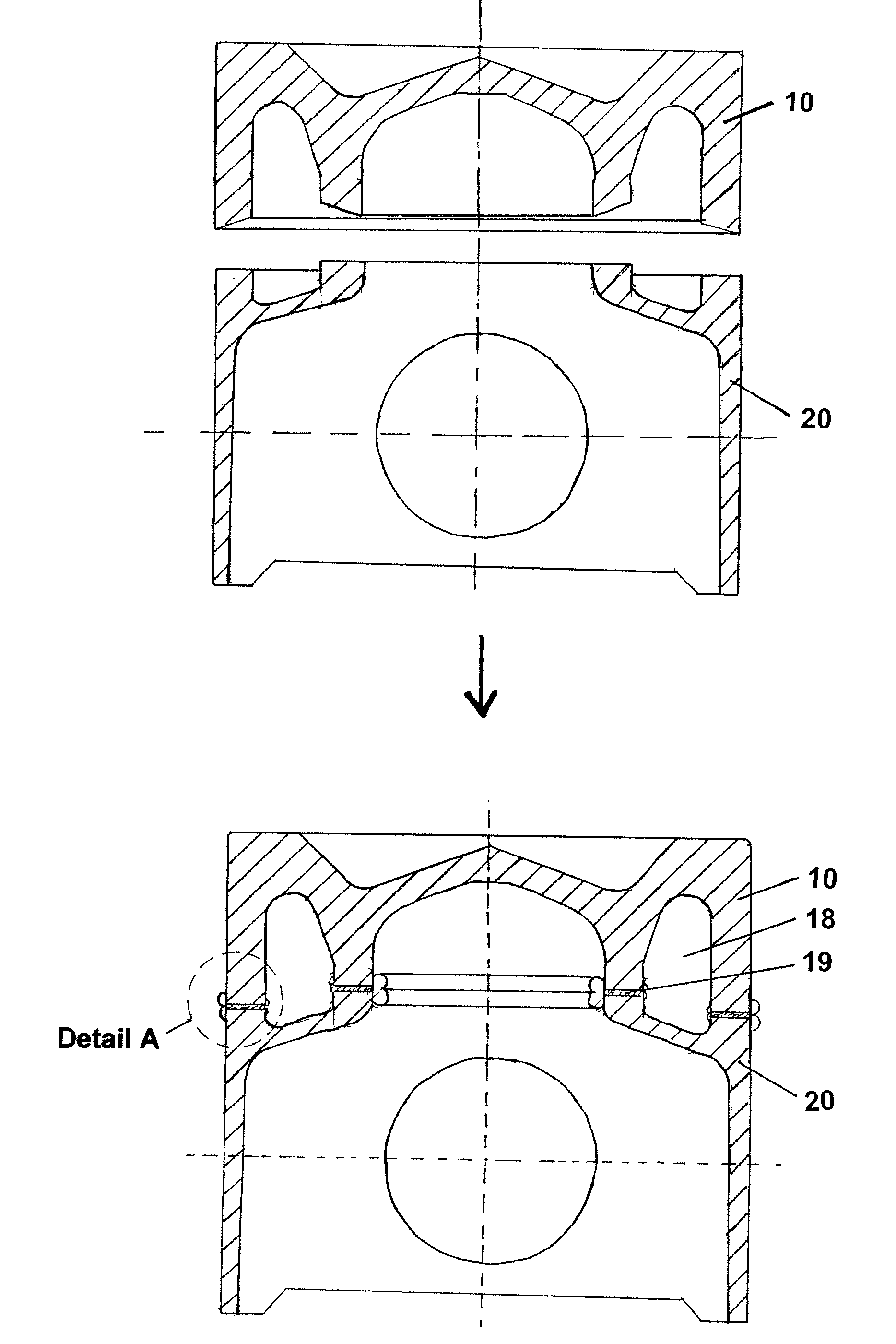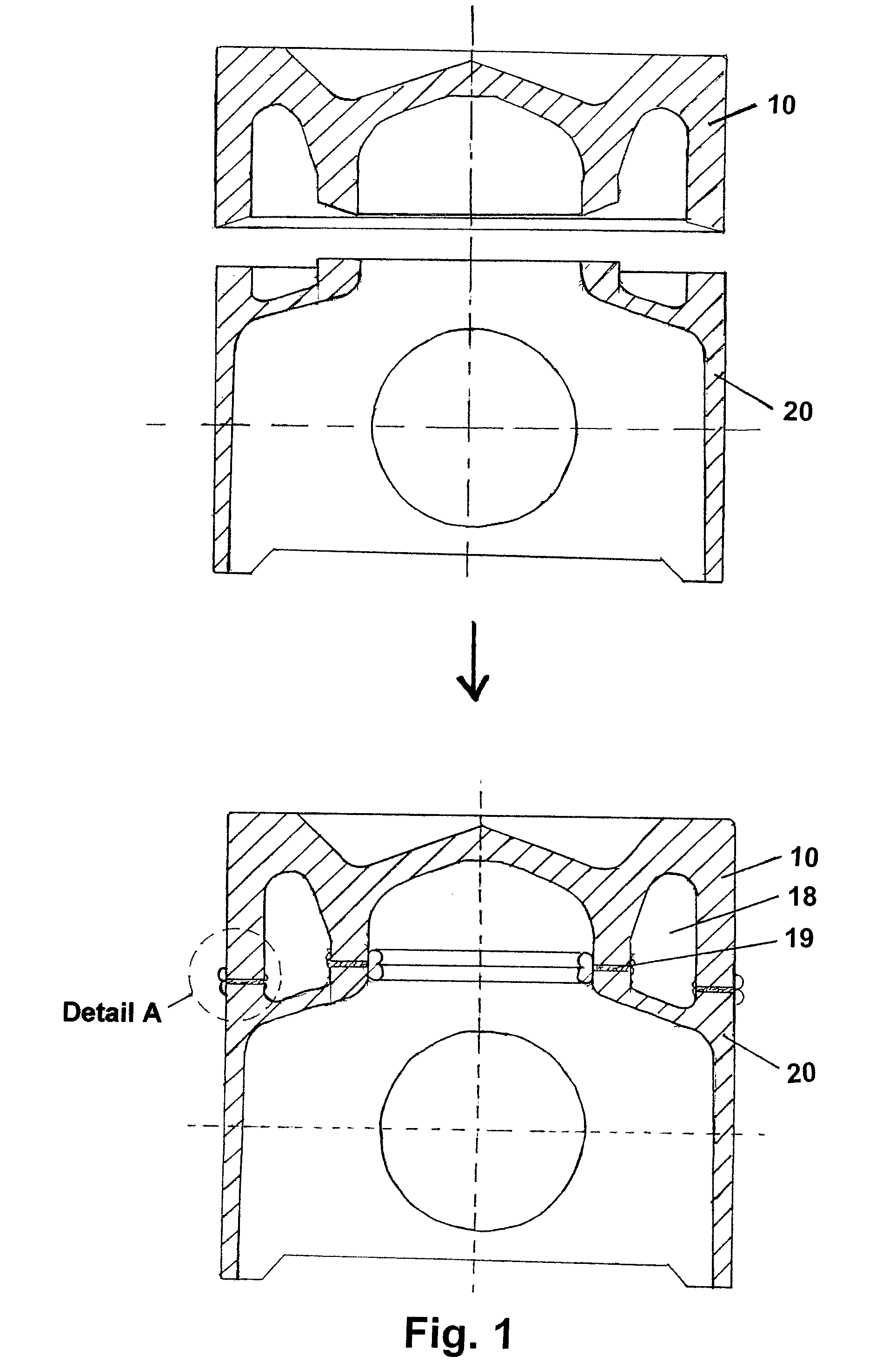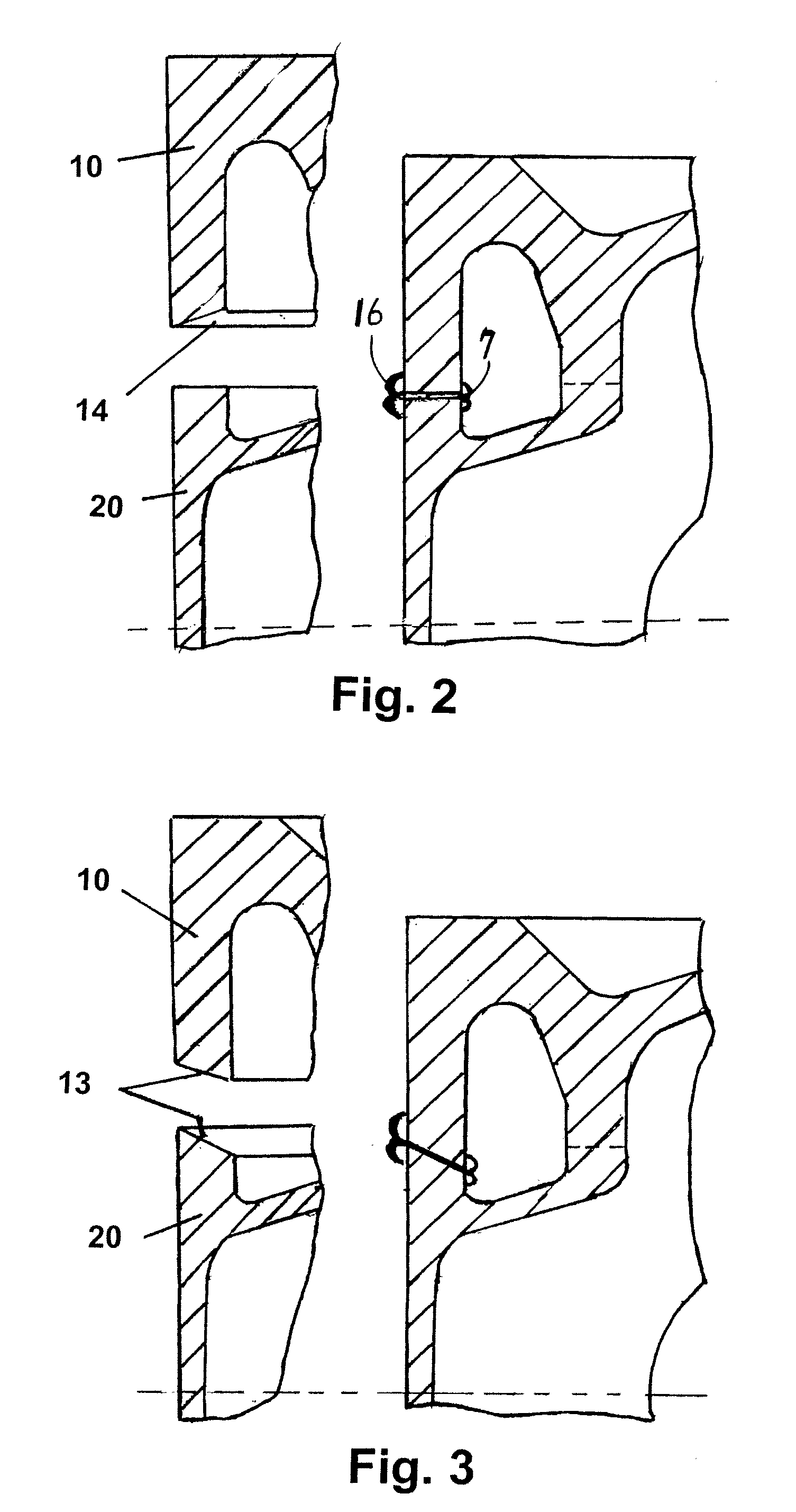Method of friction welding and friction welded part with at least two friction weld points
a technology of friction welding and friction welding part, which is applied in the direction of soldering apparatus, manufacturing tools,auxillary welding devices, etc., can solve the disadvantages of limiting oil flow, and achieve the effects of uniform expansion, good insertion characteristics, and long life cycl
- Summary
- Abstract
- Description
- Claims
- Application Information
AI Technical Summary
Benefits of technology
Problems solved by technology
Method used
Image
Examples
second embodiment
[0026]FIG. 3 shows a section of an external wall of a piston in accordance with a second embodiment before and after the friction welding process. In this case, the external wall of the piston is shaped so that both of the facing edge surfaces 13 to be welded are arranged in an inwardly downward angle so that the material accumulation is formed on the external area of the piston.
third embodiment
[0027]FIG. 4 shows a section of an external wall of a piston before and after the friction welding process. In this case, there are chamfers that create a recess in the area of the oil duct inside the piston walls, and in which the material of the weld bead can be accumulated after without limiting the internal width of the oil duct.
fourth embodiment
[0028]FIG. 5 shows a section of the walls of the top and lower parts 10, 20 of the piston. Here, the facing edge surfaces have nearly matched inter-fitting profiles, the inner sides of which remain out of contact, as shown, both before and after the friction welding process, so that there is substantially less material accumulated in the area of the oil duct.
[0029]FIG. 6 shows a similar concept to that of the FIG. 5 embodiment, the profiles being rounded instead of stepped. Here again, the inner sides of the inter-fitting profiles of the external wall of the piston parts 10, 20 remain out of contact, as shown, both before and after the friction welding process.
[0030]FIG. 7, 8 and 9 show sections of other embodiments of top and lower parts 10, 20 of a piston with inter-fitting profiles in which the inner sides of the inter-fitting profiles 13a of the external wall of the piston parts 10, 20 remain out of contact, as shown, both before and after the friction welding process and which ...
PUM
| Property | Measurement | Unit |
|---|---|---|
| Shape | aaaaa | aaaaa |
| Area | aaaaa | aaaaa |
| Strength | aaaaa | aaaaa |
Abstract
Description
Claims
Application Information
 Login to View More
Login to View More - Generate Ideas
- Intellectual Property
- Life Sciences
- Materials
- Tech Scout
- Unparalleled Data Quality
- Higher Quality Content
- 60% Fewer Hallucinations
Browse by: Latest US Patents, China's latest patents, Technical Efficacy Thesaurus, Application Domain, Technology Topic, Popular Technical Reports.
© 2025 PatSnap. All rights reserved.Legal|Privacy policy|Modern Slavery Act Transparency Statement|Sitemap|About US| Contact US: help@patsnap.com



